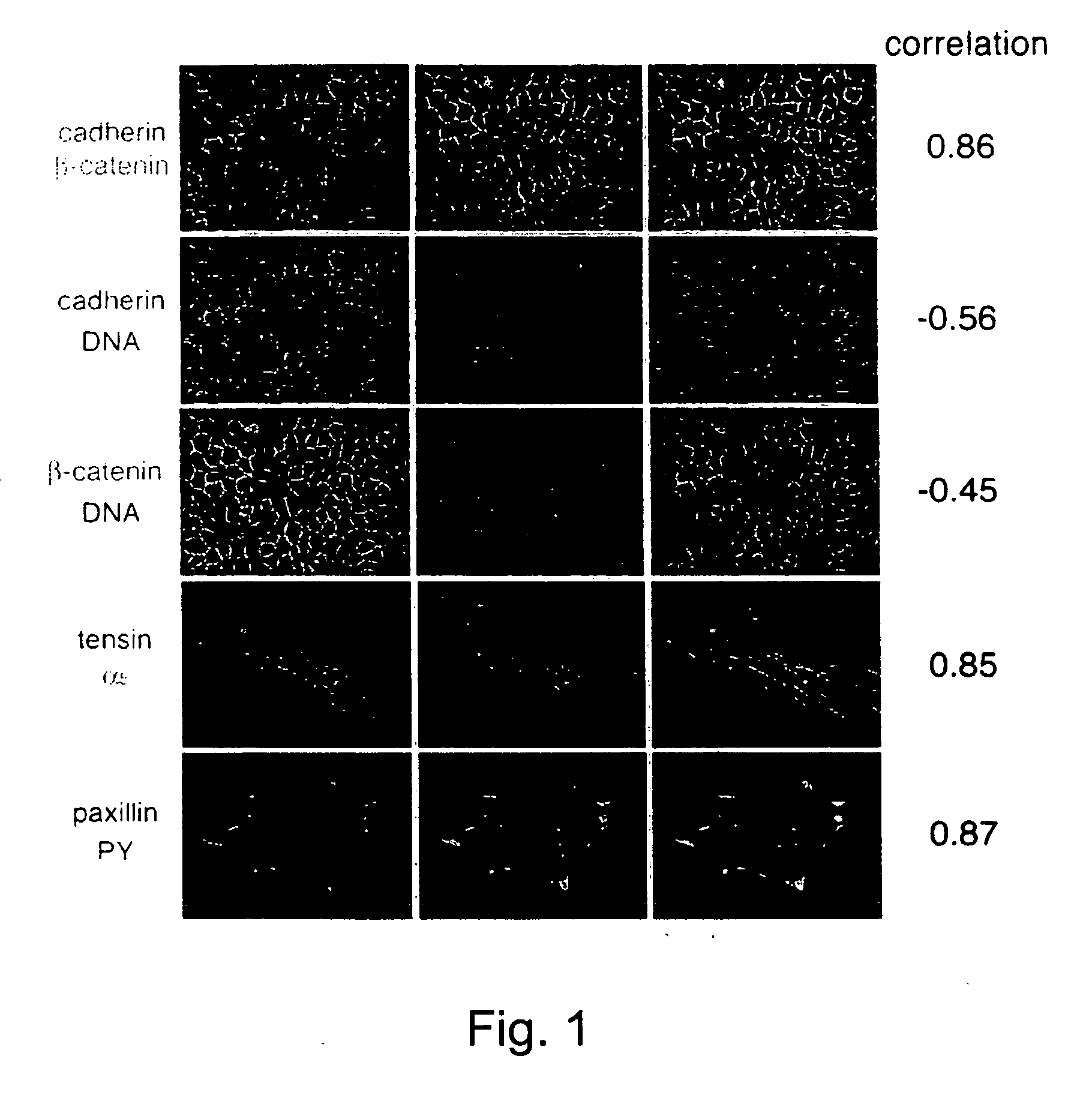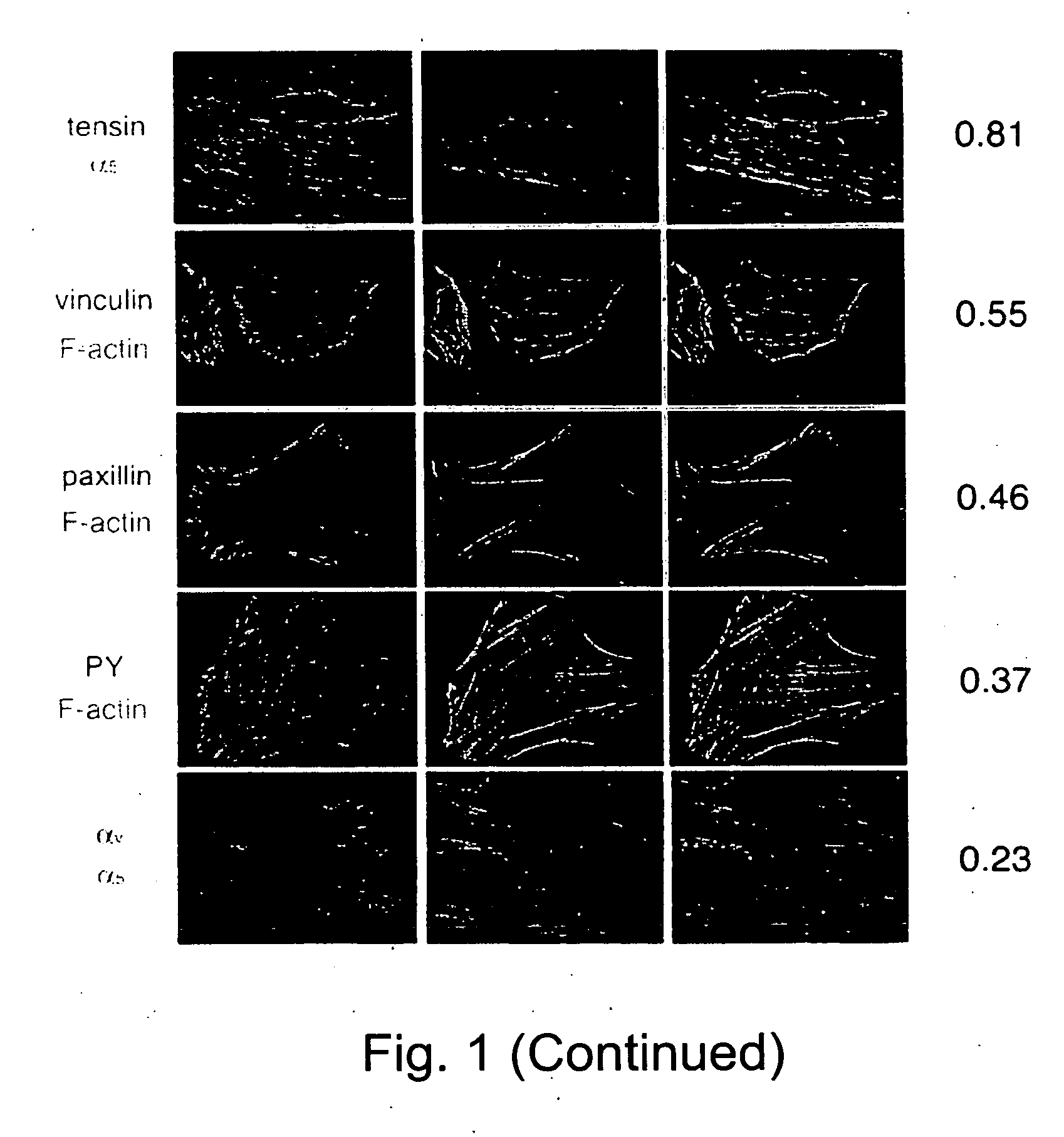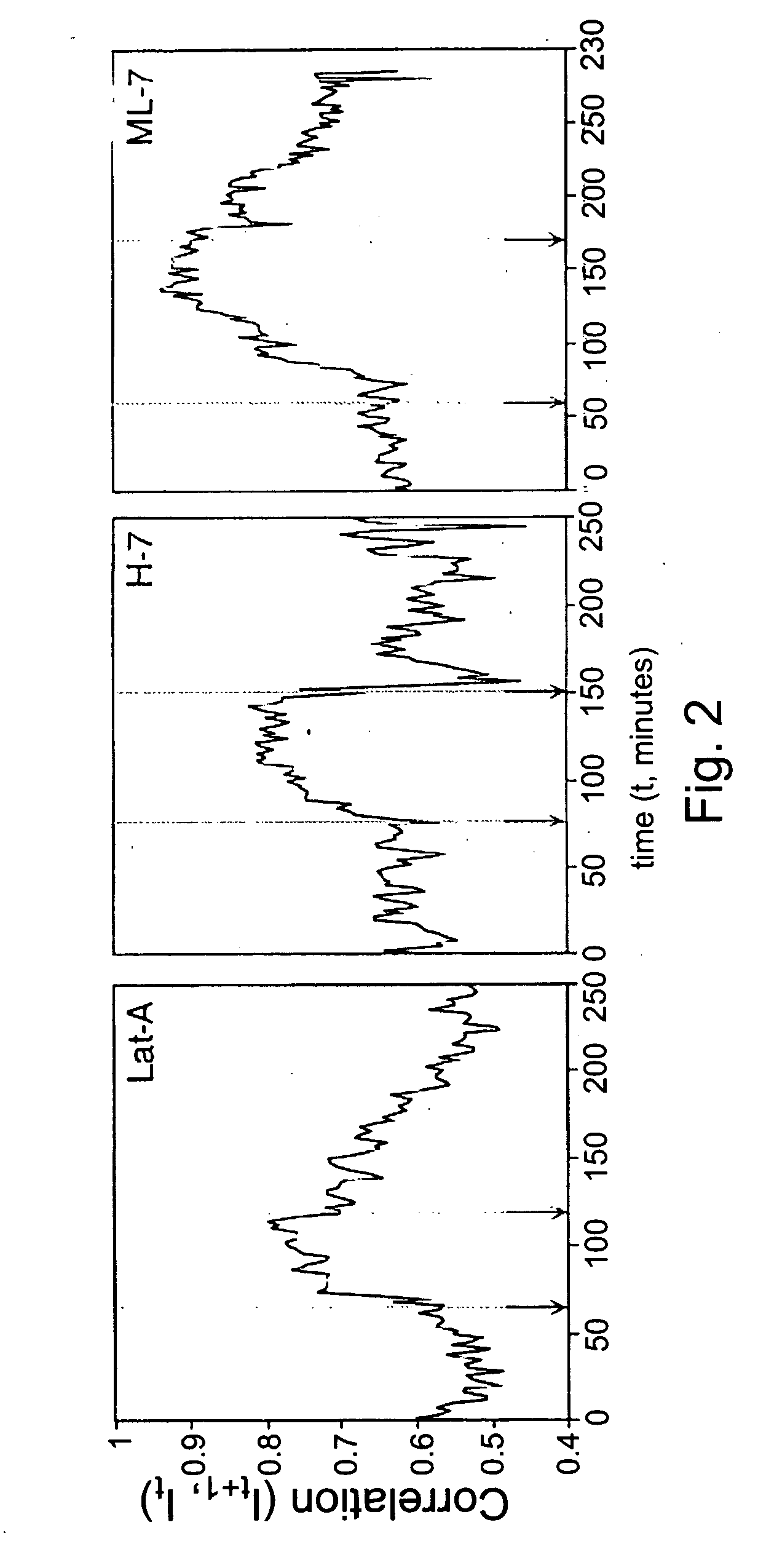Methods of isolating genes encoding proteins of specific function and of screening for pharmaceutically active agents
- Summary
- Abstract
- Description
- Claims
- Application Information
AI Technical Summary
Benefits of technology
Problems solved by technology
Method used
Image
Examples
example 1
Co-Localization Analysis of Pairs of Proteins in Cells
[0157] To determine the spatial relationships between different proteins in cells, images of the two labels were acquired and subjected to correlation analysis (according to Eq. 1, where N and M are the images of the two labels).
[0158]FIG. 1 illustrates 10 examples for such comparison. It is shown that for largely overlapping structures (i.e., cadherin / catenin; tensin / a5; paxillin / PY) high values (>˜0.7-0.8) were obtained. No correlation (i.e., cadherin or catenin / DAPI) were close to zero. Partial overlaps gave intermediate values.
example 2
Effect of Actomyosin Inhibitors on Tensin Motility in Live Cells
[0159] Inhibitors of acto-myosin contractility, like latrunculin-A (Lat-A), H-7 and ML-7, block the translocation of fibrilar adhesion (Zamir et al., Nature Cell Biology, Vol. 2, 191-196, 2000). In order to follow the kinetics of this effect a correlation analysis according to Eq. 1 was applied on digital movies of GFP-tensin transfected cells before, during and after treatments with inhibitors. Before treatment, fibrilar adhesions were highly dynamic and thus the correlation between two sequential frames was low (80 minutes).
example 3
Identifying Distortions Between Images of the Same Field
[0160] To examine the ability of correlation analysis to characterize distortions between images a rotated, translated or shrunken variants from one original image were created, and two composites were made: one from 4 original images and a second from the original, translated, contracted and rotated variants (FIG. 3). The composite images were divides to 784 square frames and for each frame the translation vector that maximizes the correlation between the two images (Eq. 4, [amax, bmax]) was found. The results found for each frame are displayed by a line with size and direction equal to the translation vector and a color proportional to the maximal correlation found (Eq. 5, Cmax). The results indicate that the translation vectors indeed tracked successfully the local translation of structures, and, as a whole, indicated the type of global distortion performed (contraction, rotation, translation and not-distorted) in the four ...
PUM
| Property | Measurement | Unit |
|---|---|---|
| Fluorescence | aaaaa | aaaaa |
Abstract
Description
Claims
Application Information
 Login to View More
Login to View More - R&D
- Intellectual Property
- Life Sciences
- Materials
- Tech Scout
- Unparalleled Data Quality
- Higher Quality Content
- 60% Fewer Hallucinations
Browse by: Latest US Patents, China's latest patents, Technical Efficacy Thesaurus, Application Domain, Technology Topic, Popular Technical Reports.
© 2025 PatSnap. All rights reserved.Legal|Privacy policy|Modern Slavery Act Transparency Statement|Sitemap|About US| Contact US: help@patsnap.com



